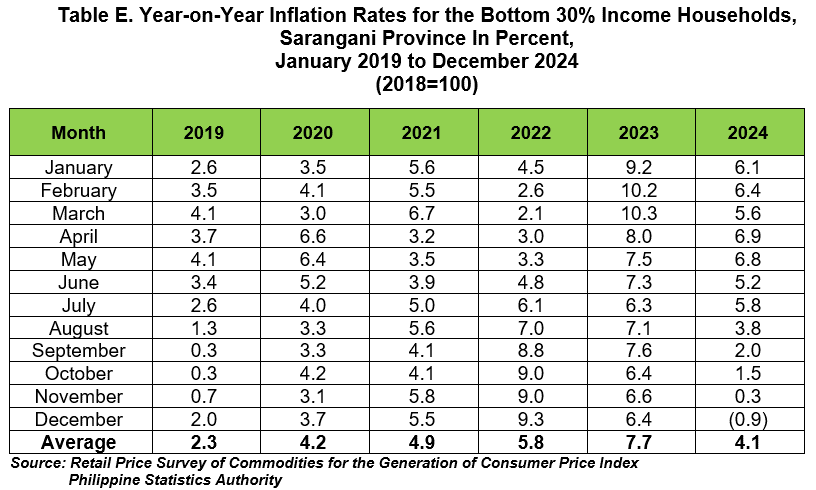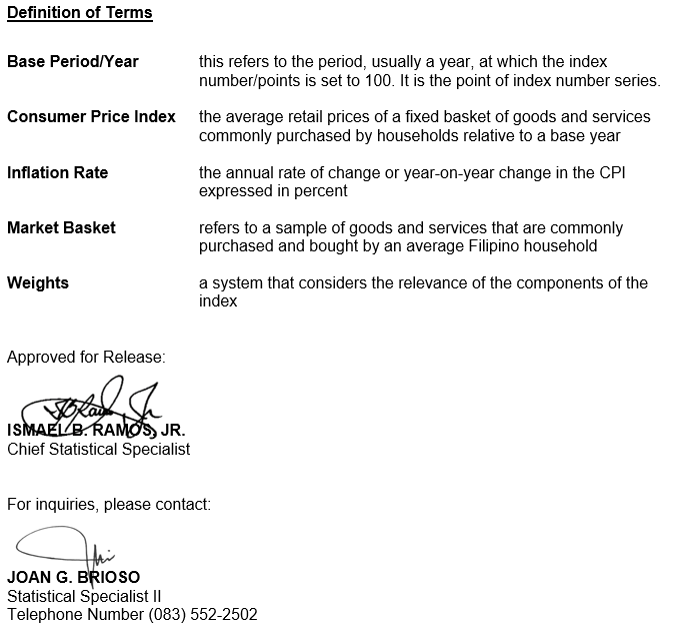
YEAR-ON-YEAR INFLATION RATES
The annual rate of change on the prices of goods and services in the market basket for the bottom 30% income households or the low-income group in Sarangani Province declined to –0.9 percent in December 2024 from last month’s inflation at 0.3 percent. This was lower than the regional and national levels at 1.0 percent and 2.5 percent, respectively. Moreover, the rate was lower by 7.3 percentage points from a year ago of the same month at 6.4 percent. The average inflation or the year-to-date inflation of the province was recorded at 4.1 percent. (Table A and Figure1)
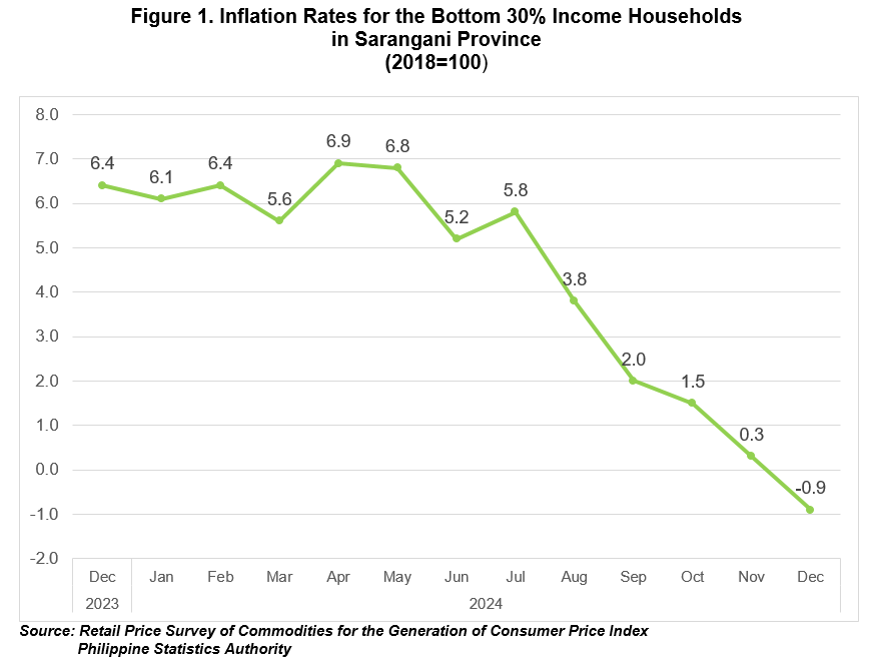
The main contributor to the downtrend in the province’s inflation for the bottom 30% income households in December 2024 was food and non-alcoholic beverages with -2.8 percent from -0.5 percent in the previous month which contributed 98.8 percent to the overall inflation. This was followed by housing, water, electricity, gas and other fuels with 0.6 percent inflation from 0.7 percent in November 2024 which contributed 1.0 percent to the overall inflation. Also, furnishings, household equipment and routine household maintenance contributed to the downtrend with 0.7 percent inflation in December 2024 from 0.8 percent inflation in the previous month.
On the contrary, the following commodity groups showed an uptrend inflation for the bottom 30% income households during the month:
a) Alcoholic beverages and tobacco, 3.4 percent from 2.6 percent;
b) Transport, 2.4 percent from 0.9 percent; and
c) Personal care and miscellaneous goods and services, 4.6 percent from 4.5 percent. (Table B)
Furthermore, the following commodity groups maintained their previous month’s inflation rates:
a) Clothing and footwear, at 1.5 percent;
b) Health, at 1.7 percent;
c) Information and communication, at 0.4 percent;
d) Recreation, sport and culture, at 3.8 percent;
e) Education services, at zero inflation;
f) Restaurants and accommodation services, at zero inflation; and
g) Financial services, at zero inflation. (Table B)
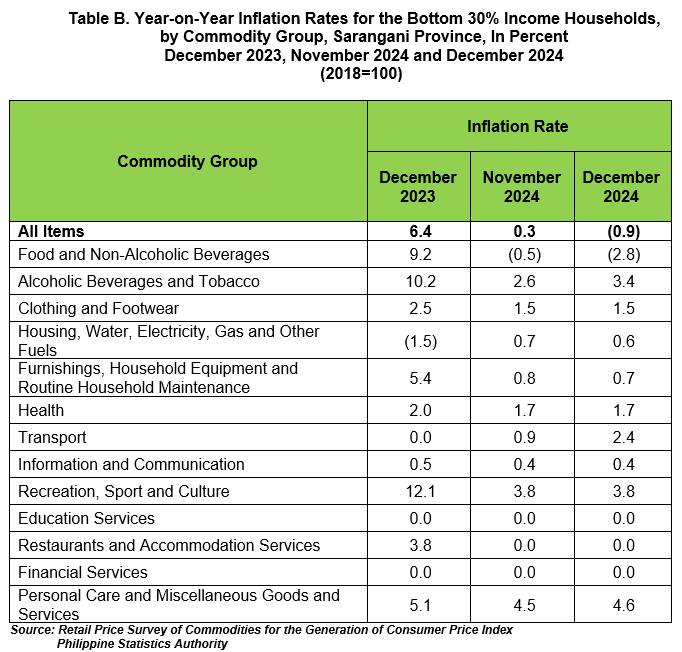
The major contributor to the downtrend inflation of food and non-alcoholic beverages was cereals and cereal products with -9.6 percent in December 2024 from -5.5 percent in the previous month with 73.4 percent share. This was followed by vegetables, tubers, plantains, cooking bananas and pulses with -2.4 percent in December 2024 from 0.9 percent in the previous month. Also, fish and other seafoods showed a downtrend during the month with 4.1 percent inflation from 5.0 percent in November 2024.
Moreover, the following also contributed to the downtrend inflation of food and non-alcoholic beverages during the month:
a) Milk, other dairy products and eggs, 6.2 percent from 6.6 percent;
b) Fruits and nuts, 6.3 percent from 8.8 percent;
c) Ready-made food and other food products, 3.4 percent from 5.4 percent;
d) Coffee and coffee substitutes, 3.3 percent from 3.7 percent;
e) Tea, mate and other plant products for infusion, 1.6 percent from 1.8 percent;
f) Other non-alcoholic beverages, 0.0 inflation from 0.6 percent. (Table C)
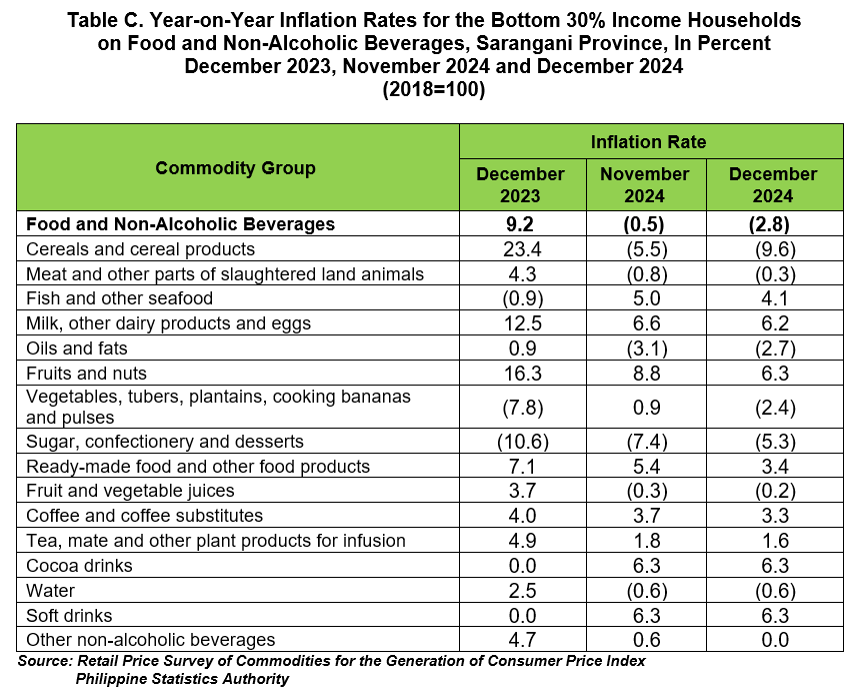
Meanwhile, the province’s food inflation for the bottom 30% income households further declined to -3.2 percent in December 2024 from -0.7 percent in November 2024. In December 2023, food inflation for the bottom 30% income households was higher at 9.6 percent. (Table D)
The deceleration of food inflation for the bottom 30% income households in December 2024 was due to the slower inflation rate of rice with -8.8 percent from -3.6 percent in the previous month. This was followed by vegetables, tubers, plantains, cooking bananas and pulses at -2.4 percent inflation during the month from 0.9 percent in November 2024. Also, corn contributed to the downtrend with -17.0 percent in December 2024 from -14.0 percent in the previous month. (Table D)
In addition, slower food inflation was also recorded in the following indices:
a) Flour, bread and other bakery products, pasta products, and other cereals, -3.3 percent from -2.4 percent;
b) Fish and other seafood, 4.1 percent from 5.0 percent;
c) Milk, other dairy products and eggs, 6.2 percent from 6.6 percent;
d) Fruits and nuts, 6.3 percent from 8.8 percent;
e) Ready-made food and other food products n.e.c., 3.4 percent from 5.4 percent. (Table D)
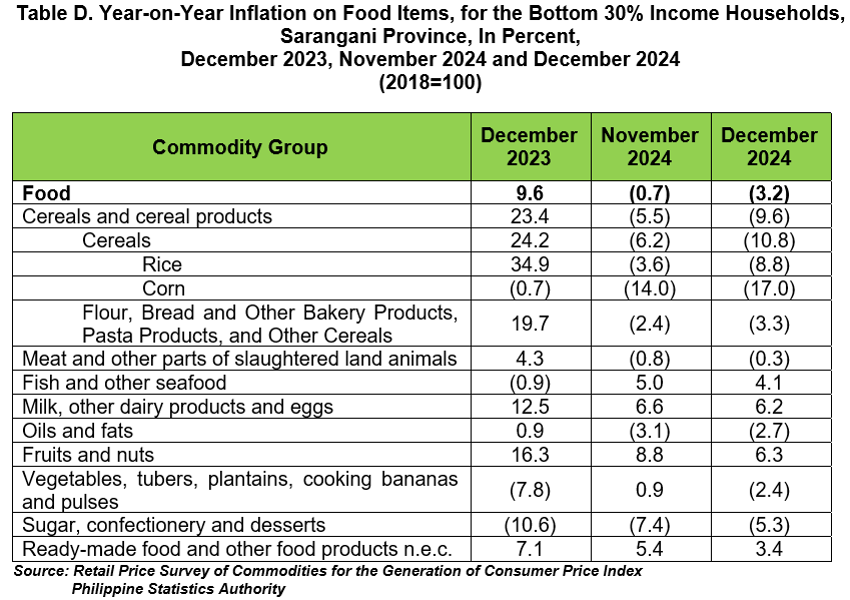
In contrast, higher annual growth rates were observed in the following indices in December 2024:
a) Meat and other parts of slaughtered land animals, -0.3 percent from -0.8 percent;
b) Oils and fats, -2.7 percent from -3.1 percent;
c) Sugar, confectionery and desserts, -5.3 percent from -7.4 percent. (Table D)
